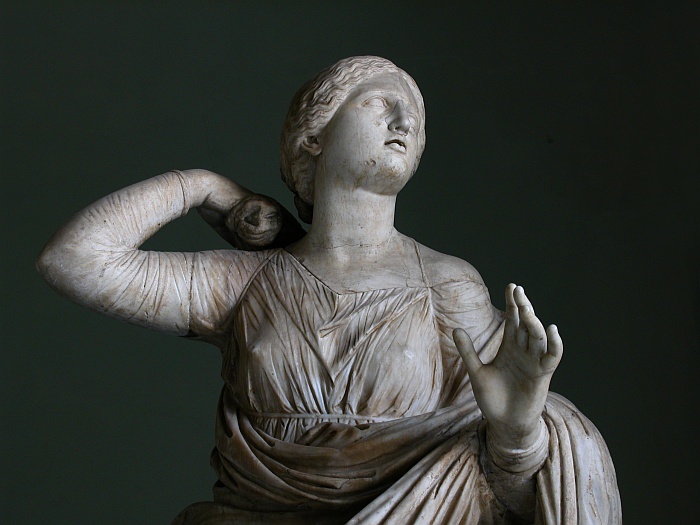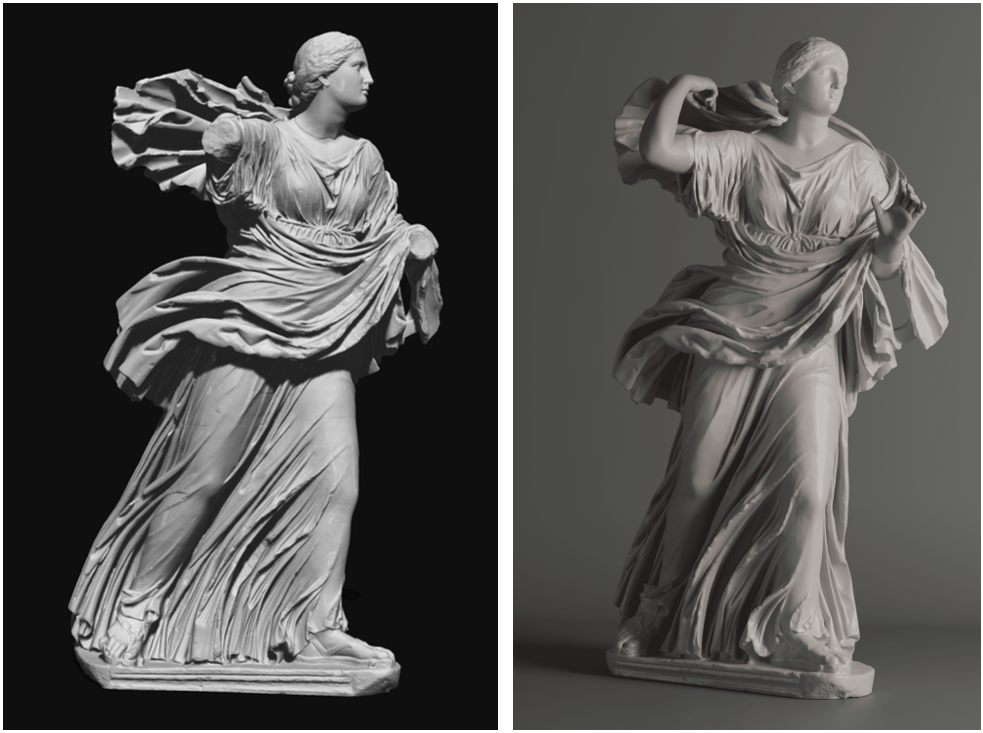3D reconstruction of Niobide Chiaramonti
Guest post by Barbara Nagy

The process of creating the additions
The 3D additions were made in Zbrush. These elements were not directly reconstructed on the base model; instead, each addition was created by using separate forms. The recunstruction process began with the statue’s left hand. First of all, a spherical shape was inserted, which was scaled down, elongated, and positioned in place of the palm. This form was selectively masked, leaving an oval opening at the wrist, to prevent any deformation in that area during further sculpting. Using the Gizmo tool, the shape of the wrist was extruded, and the same method was used to model the fingers (see Figure 1).
The stretching process caused polygon distortion and surface noise. In order to continue the sculpting, Dynamesh was applied. This retopology helps to get a new, cleaner surface, with uniform polygons. Then the mass of the hand was sculpted by using a variety of brushes and the direction of each fingers were adjusted segment by segment.
To enable the sculpting of finer details (such as fingernails and sharp creases) additional Subdivision levels were used (see Figure 2). Finally, the model was duplicated and processed with ZRemesher to generate a cleaner topology, which followed the model’s shape better. For the right arm, the previously completed left hand was duplicated and mirrored to ensure the same scale and form. Due to the fact, that the entire forearm was missing, it was constructed separately. After that the hand was positioned into the planned pose and then it was merged with the forearm.
Following the reconstruction of the hands, the remaining missing parts (including the right little toe and some broken sections of the drapery) were similarly reconstructed one by one.
 Figure 1 - Steps of sculpting hand (Source:
Figure 1 - Steps of sculpting hand (Source:  Figure 2 – Subdivision levels, increasing details of the model
Figure 2 – Subdivision levels, increasing details of the model Figure 3 – The 3D model before and after the reconstruction
Figure 3 – The 3D model before and after the reconstruction